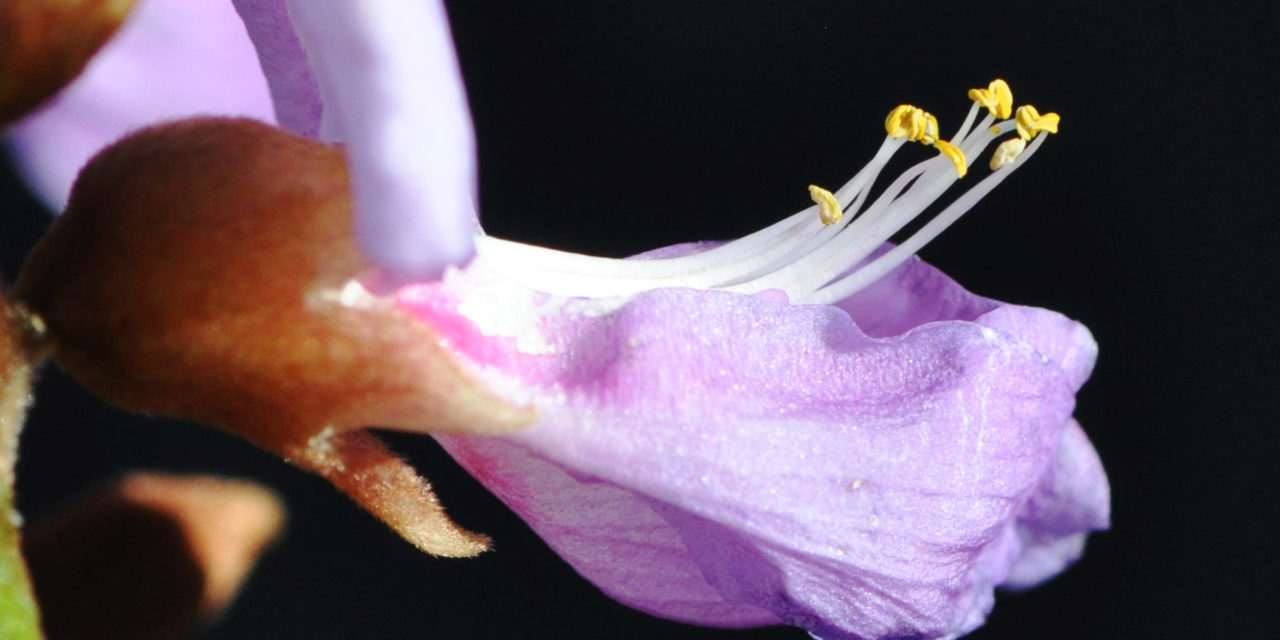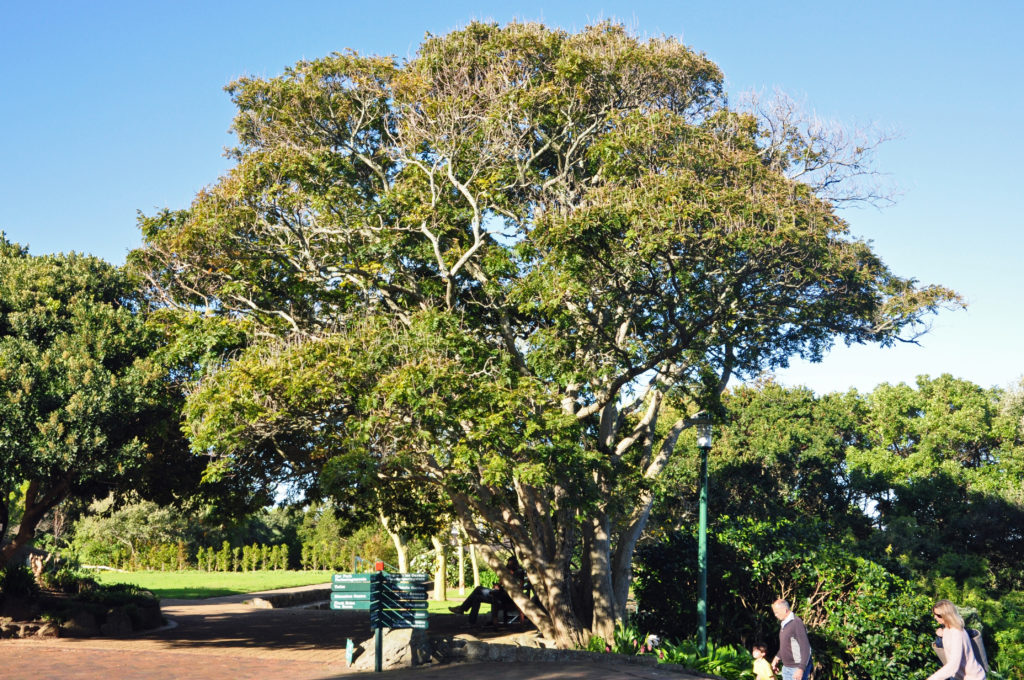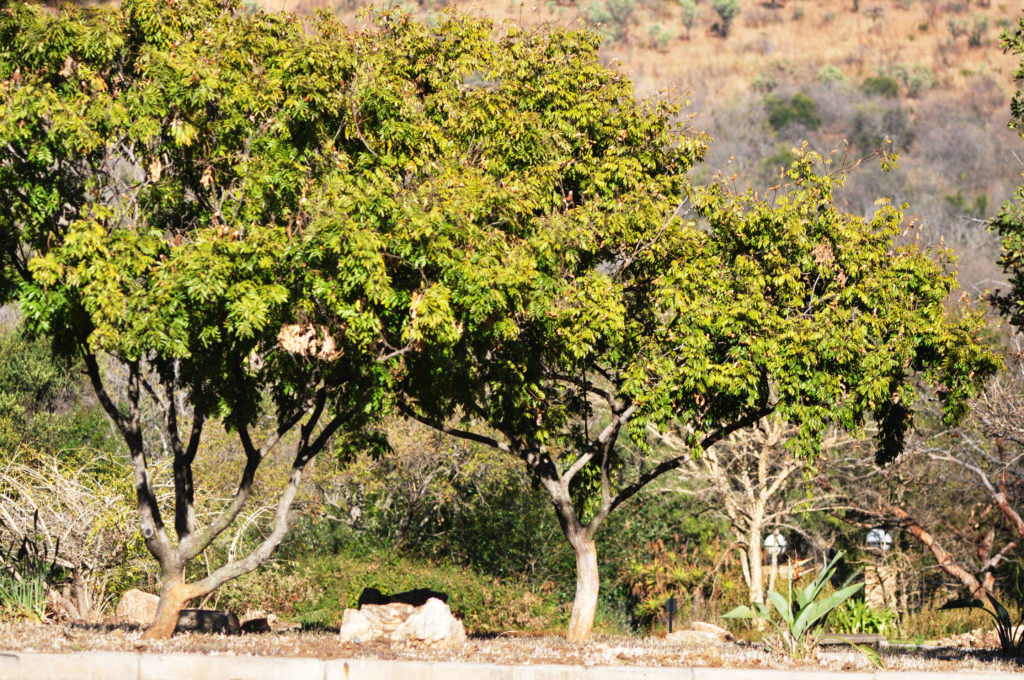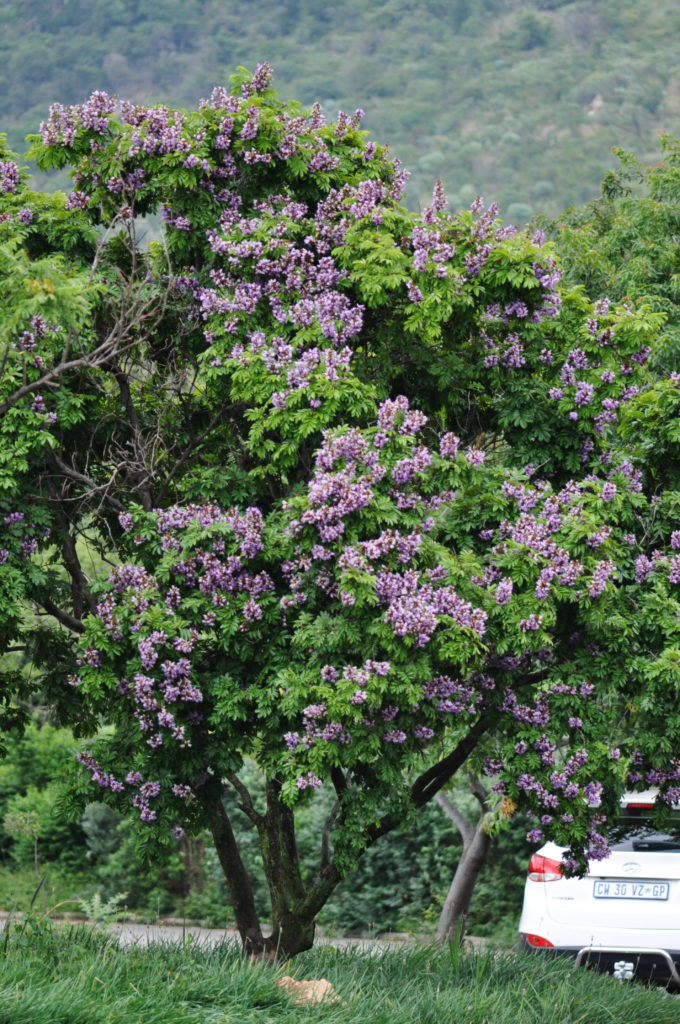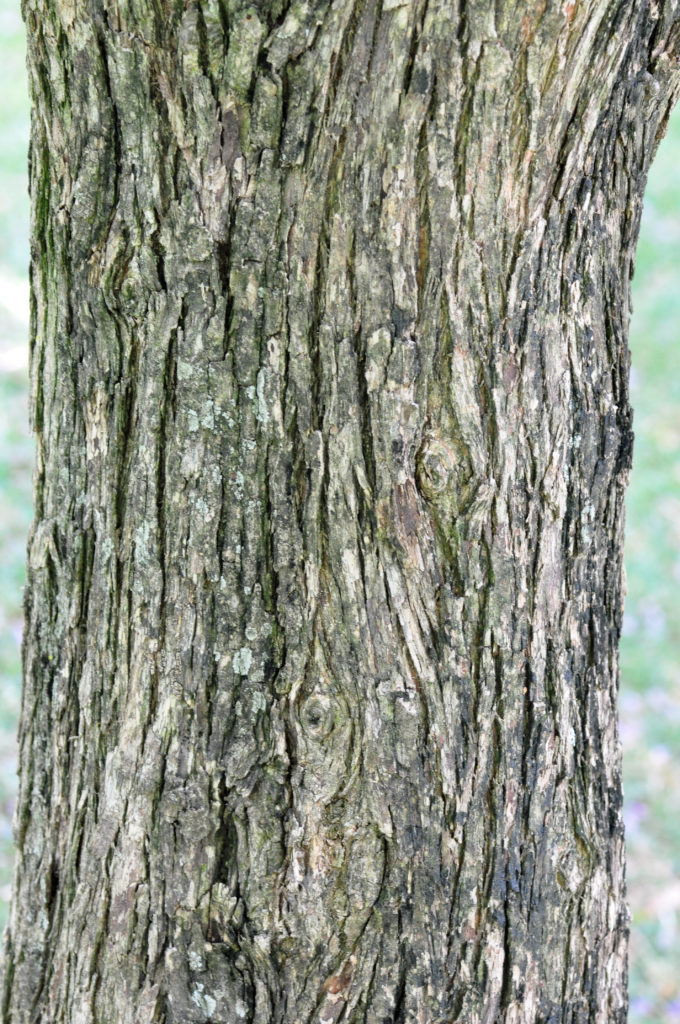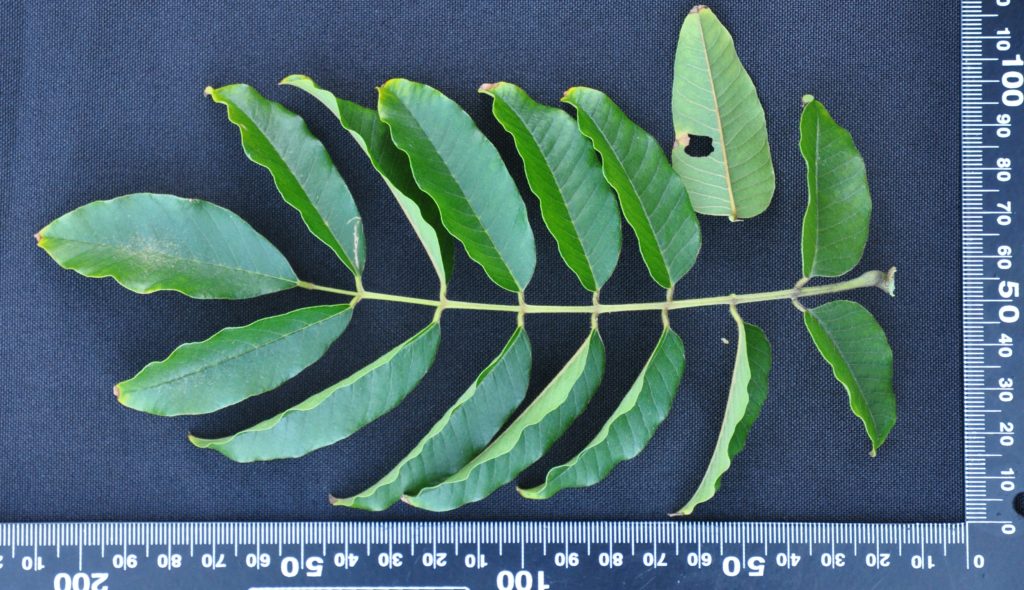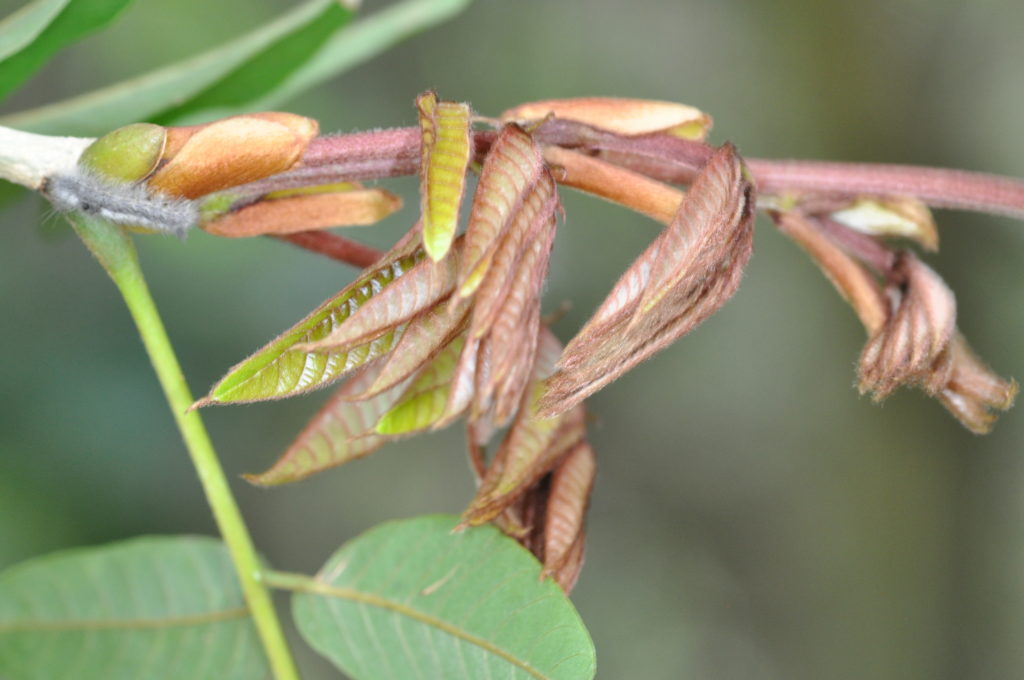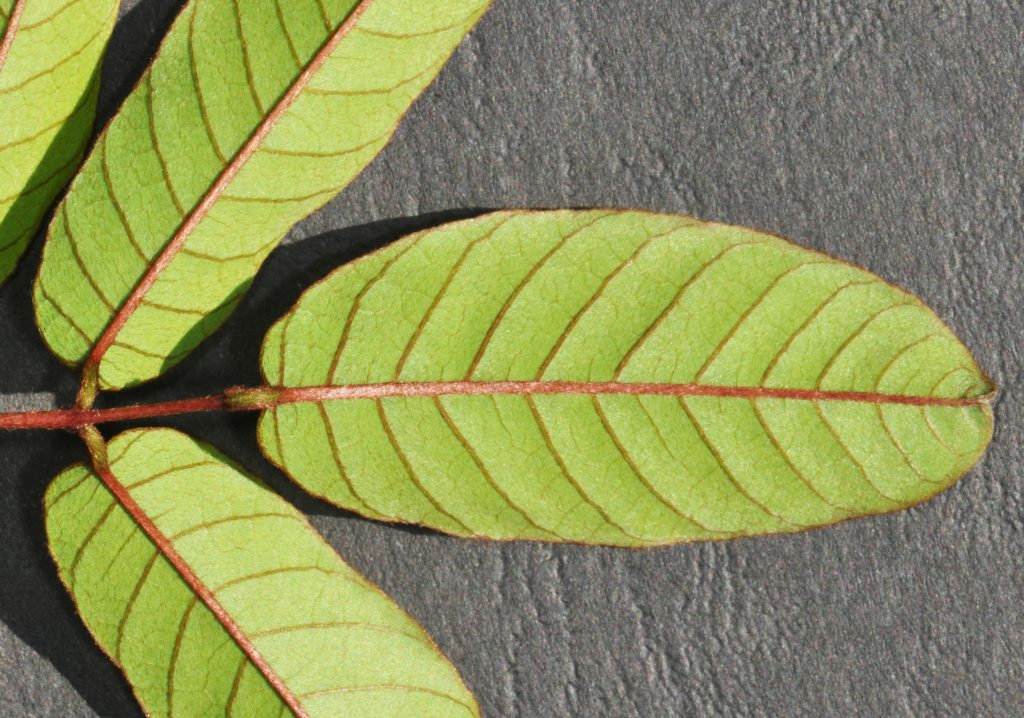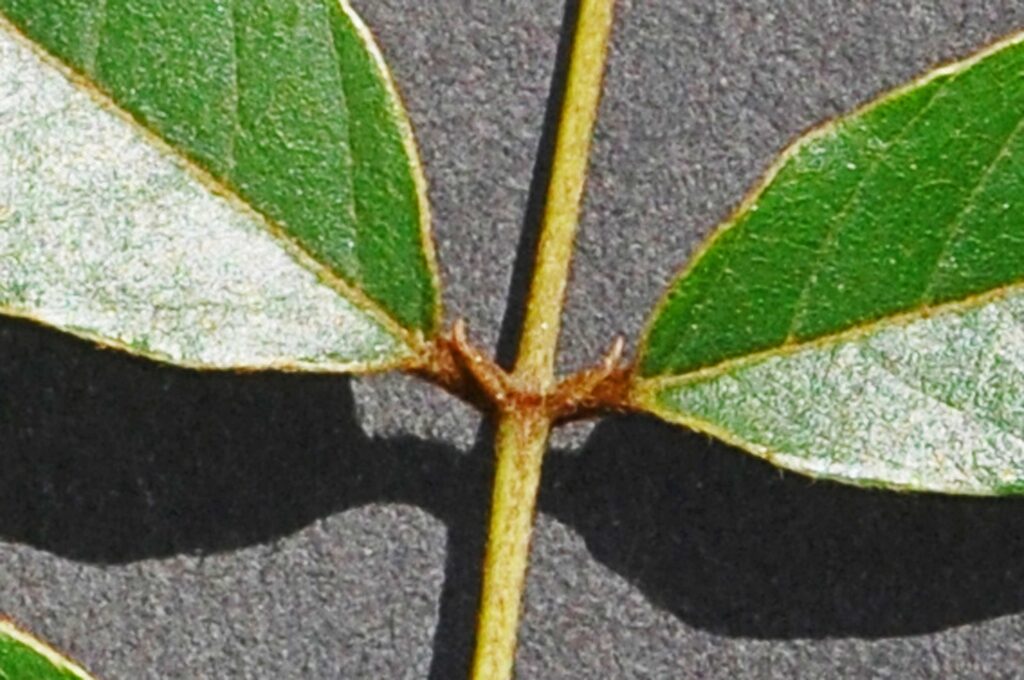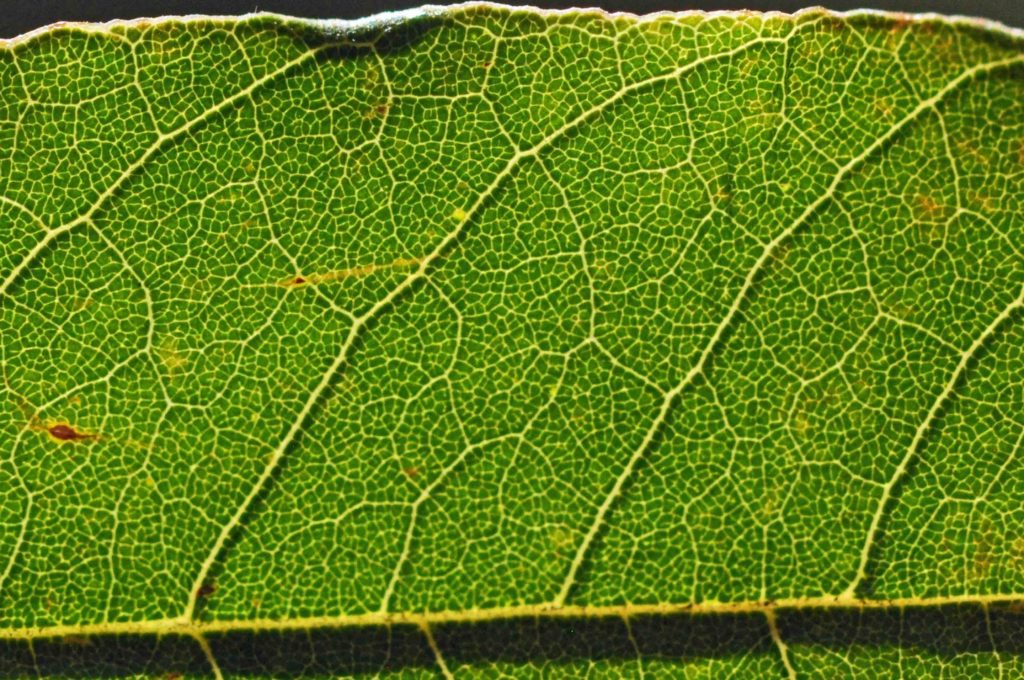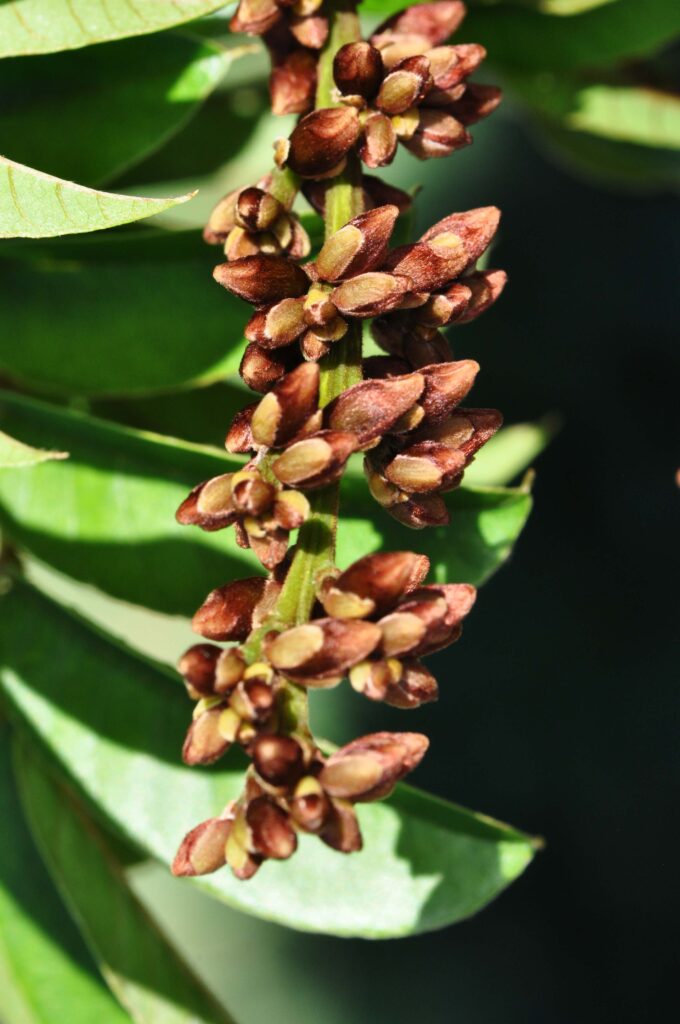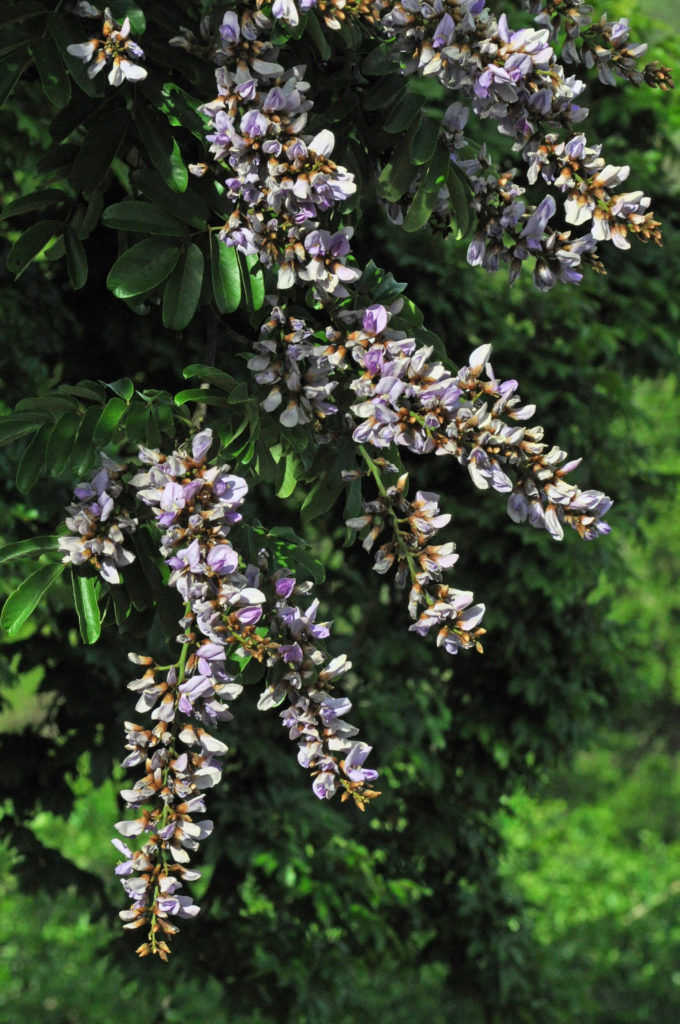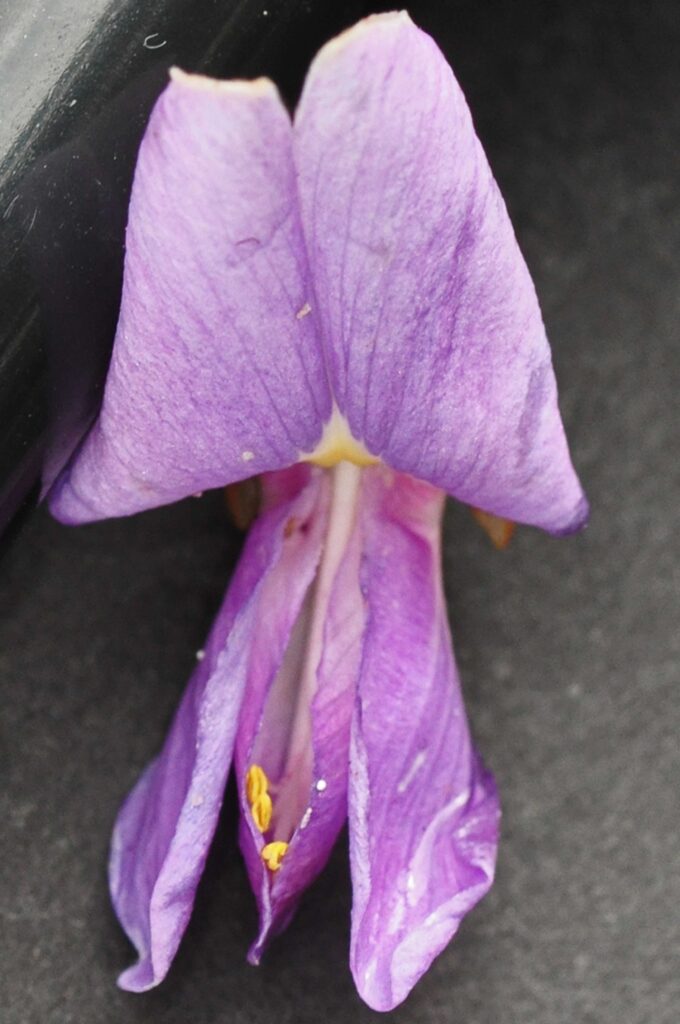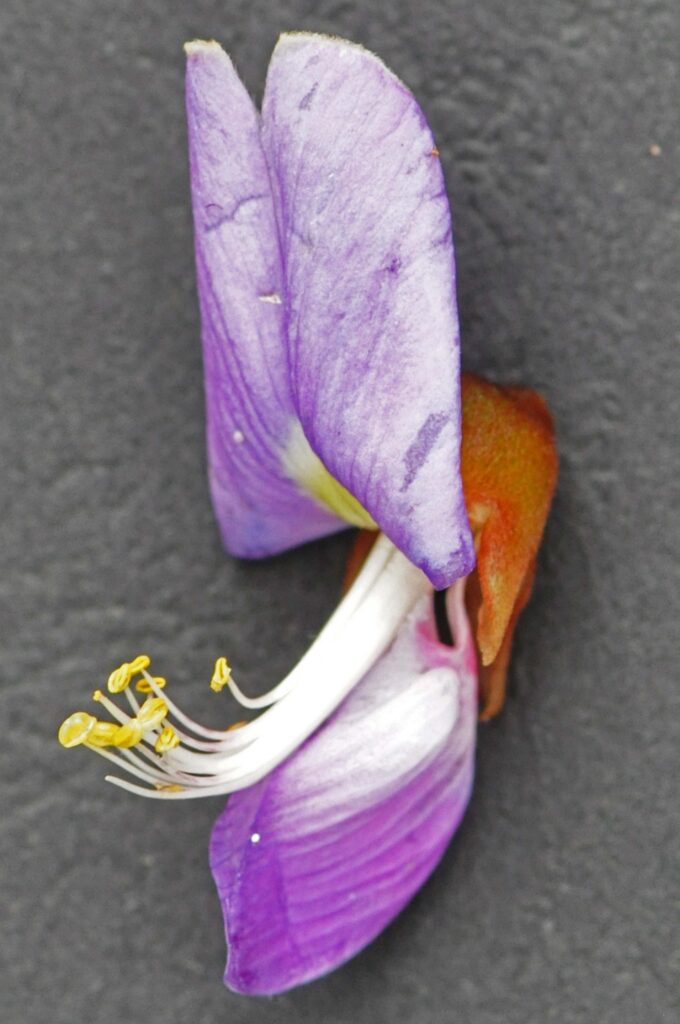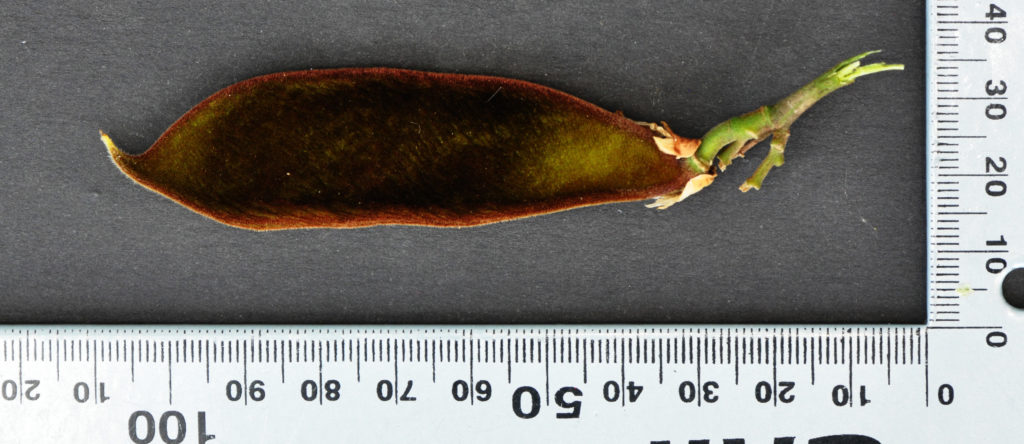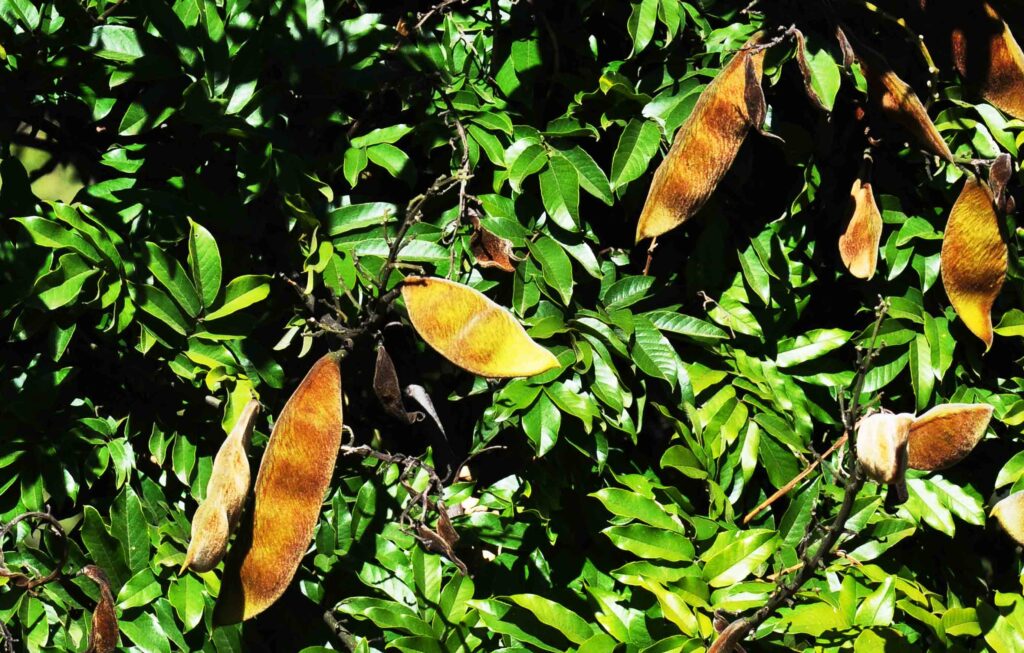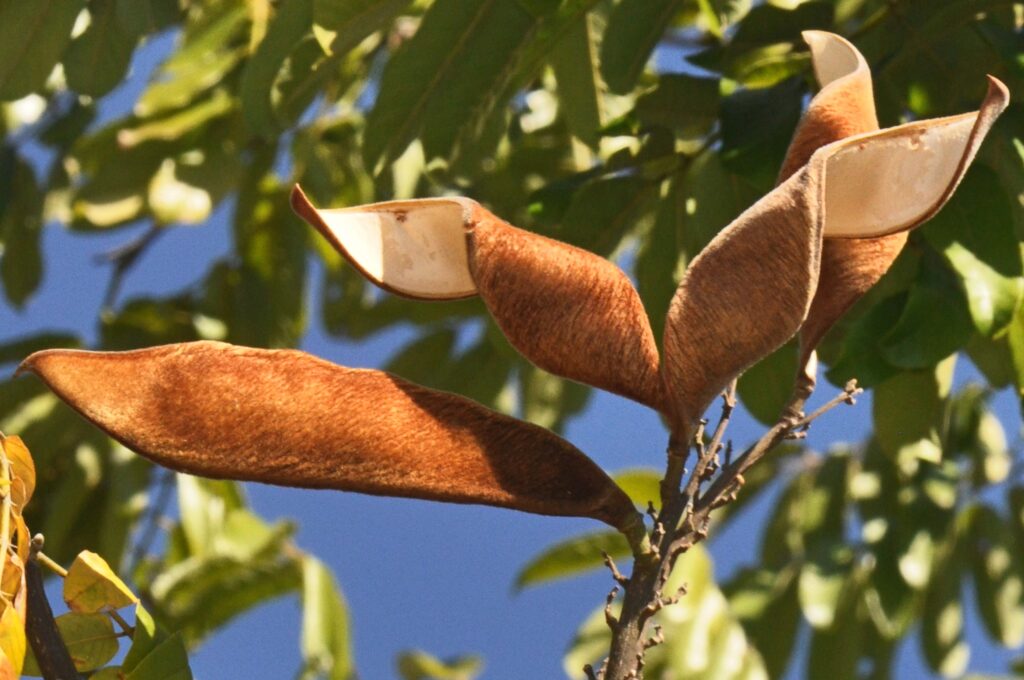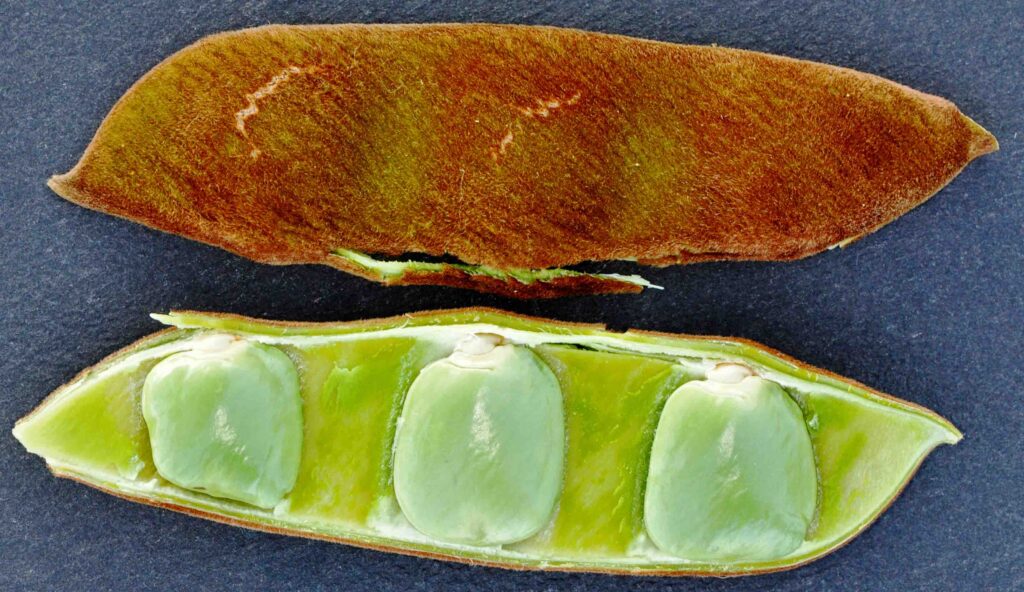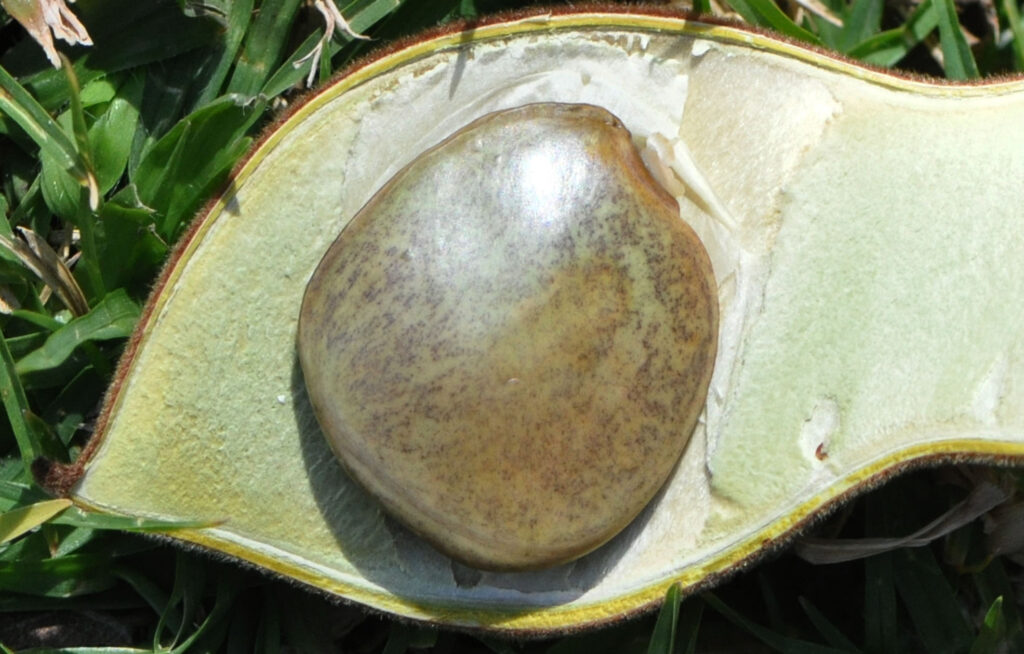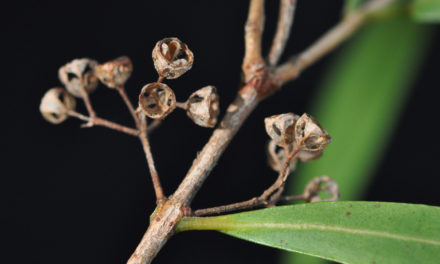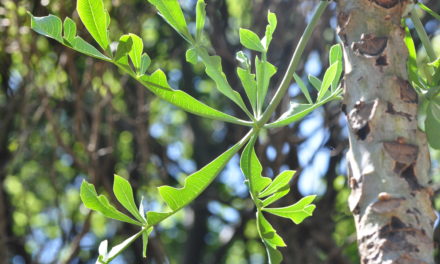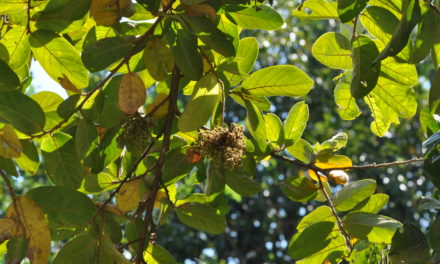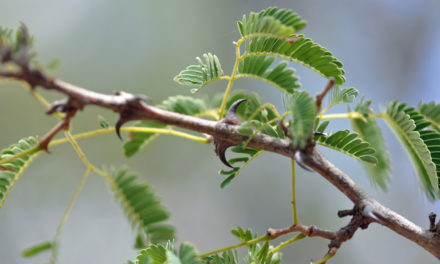General Info – summary
This impressive Tree has a spreading crown & is usually up to 13m high. The grey to light brown bark gets longitudinally fissured. Stipules & stipels are present in the imparipinnate & entire Leaves. Many bluish, bisexual, irregular, pea-like, Flowers are in racemes. 10 stamens (1 free), surround the pistil with 1 style & a superior ovary. Mature Fruit is a brown, hairy, dehiscent pod usually with 3 or more flat, oblong seeds.
Description
Millettia grandis
Previous Names: Millettia caffra, Virgilia grandis.
SA Tree No. 227.
Common names: (Afr) Oesambiet, Omsambeet, Omzambeet, Umzimbeet. (Eng) Umzimbeet. (isiXhosa) Umkunye, Umsimbithi. (isiZulu) Umkunye, Umsimbithi, Umsimbithwa, Umzimbeet.
Family: Fabaceae, or Leguminosae (Pea, bean or legume family). After the Orchidaceae and the Asteraceae, the Fabaceae is the third largest Angiosperm (flowering plants) family with 700+ genera and close to 20 000 species. Local Tree genera on this website include Acacia (Vauchellia, Senegalia), Albizia, Bauhinia, Bolusanthus, Burkea, Calpurnia, Colophospermum, Cordyla, Cyclopia, Dichrostachys, Erythrina, Erythrophleum, Faidherbia, Indigofera, Mundulea, Peltophorum, Philenoptera, Piliostigma, Schotia and Xanthocercis. The Fabaceae are recognisable by their fruit and by their pinnately compound Leaves. Leaves may also be simple – even bilobed and usually have stipules – some of which may be spinescent. Leaflets are usually entire. Flowers are bisexual and bracteate. Regular flowers usually have 4-5 sepals and the same number of petals. Irregular flowers have 4-5 sepals and 5 or less petals. Stamens have anthers that have 2 pollen sacs and there are usually at least twice the number of stamens as petals – often 10. The superior Ovary has 1 locule containing 1 or more ovules. The Stigma and Style are simple. The single carpel develops into the Fruit, which is usually a pod. The fallen pods may break into segments. Seeds vary.
Name derivation: Millettia named after Charles Millet who was a plant collector and an official with the British East India Company in the 1830’s – stationed in Canton, China (now Guangzhou). grandis – grand/great – possibly referring to the flowers. There are 2 species of the genus Millettia in South Africa. The other is Millettia stuhlmannii.
Conservation: National Status: L C. Least Concern. 2018 (L. von Staden). However, there is some pressure for the use of the valuable wood.
Tree
This medium to large Tree, with its spreading crown (photos 195 & 116), is usually up to 13m but may reach 25m high. The tree remains stunted in shallow soils. The Bark is grey to light brown and smooth on young branches. Young branches also have dark brown, velvety hairs. The bark becomes rather flaky, rough and longitudinally fissured with age (photo 839). In the forest, the bark is light brown and may be covered with moss. Lenticels (a usually raised corky oval or elongated area on the plant that allows the uncontrolled interchange of gases with the environment) are visible. In forests, the Trunk is often covered with moss.
- 195 2018/09/10. Kirstenbosch NBG. Photo: David Becking.
- 116. 2014/08/26. Walter Sisulu NBG. Photo: David Becking.
- 859. 2015/01/20. Walter Sisulu NBG. Photo: David Becking.
- 839. 2015/11/17. Walter Sisulu NBG. Photo: David Becking.
Leaves
This tree may be briefly deciduous. The alternate Leaves are imparipinnate (pinnately compound leaf ending in a single leaflet) and up to 25 x 13cm (photo 200). There are 3-7 pairs of opposite Leaflets plus the terminal one. Reddish young leaflets are curled about the midrib (photo 440). The broadly lance or oblong shaped leaflets are up to 6,5 x 2,6cm. The upper surface is smooth, shiny dark green to bluish green with sunken veins (photo 200). The under surface is lighter, bluish green with some silky reddish-brown hairs (photo 45). The Midrib is channelled above and the “parallel” lateral veins and have conspicuous reddish hairs below (photo 45). Here the midrib and evenly spaced “parallel” Lateral veins do reach the margin. Leaflet details are best seen when viewed against a strong light (photo 530). In this photo, the lateral veins do reach the margin and the smaller side veins between them are not ladder-like. In the field, a hand lens will help. The Apex tapers to a narrow tip. The Base usually tapers. The Margin is entire (with a continuous margin, not in any way indented). The Petiole (leaf stalk) is hairy, up to 2cm long (photo 200), swollen at the base and reddish when young (photo 440). The hairy Petiolules (leaflet stalks) may be dark reddish brown and up to 4mm long (photo 200). This colour may run into the veins on the lower side. Stipules (basal appendages of the petiole) are conspicuous and bract-like. Minute, hair-like Stipels (secondary stipules situated at the base of a leaflet pairs of a compound leaf) might appear on the rachis (main axis bearing flowers or leaflets) at the base of leaflet pairs (photo 170).
- 200. 2018/09/10. Kirstenbosch NBG. Photo: David Becking.
- 440. 2016/11/08. Pretoria NBG. Photo: David Becking.
- 45. 2014/12/02. Walter Sisulu NBG. Photo: David Becking.
- 170. 2014/06/03. Walter Sisulu NBG. Photo: David Becking.
- 530 2019.09.04 Walter Sisulu NBG. Photo: David Becking.
Flowers
The Flowers are in terminal almost vertically hanging Racemes (a simple, unbranched, indeterminate inflorescence with pedicellate – stalked flowers along the axis that open in succession towards the apex). Racemes are up to 25cm long (photo 365). Large, rusty brown flower buds (photo 751) open and clearly reveal the bluish pea-shaped flowers that extend beyond the leaves. Each flower is bisexual and zygomorphic (floral parts are unequal in size or form so that the flower is capable of division into essentially symmetrical halves by only one longitudinal plane passing through the axis). Dark brown velvety hairs cover the campanulate (bell-shaped) Calyx (photo 751). Here the 5 Sepals are joined at the base. The Corolla has 5 Petals that are mauve lilac or purple on the inside (photo 561). The uppermost Vexillum (standard petal) has a slightly yellowish central base (photo 866). This petal stands almost vertically above the two sickle shaped to ovate wing petals (photo 866) – one on each side of the 2 joined incurved, obtuse keel petals below (photo 866). These keel petals enclose the 10 Stamens, 9 of which are joined and the uppermost one is almost free (photos 867 & 361). Here the Anthers are uniform and centrally attached to the Filament. Contained within the stamens is the Pistil (a unit of the Gynoecium, the female element of the flower, composed of the Ovary, Style and Stigma). Here the superior Ovary is pubescent (with dense fine, short, soft hairs). Extending from this is the single Style that initially grows out and then bends upwards. The style ends in a small-headed pollen receiving Stigma. (Nov-Mar).
- 751. 2014/12/07. Walter Sisulu NBG. Photo: David Becking.
- 365. 2016/12/22. Walter Sisulu NBG. Photo: David Becking.
- 866. 2015.01.20. Walter Sisulu NBG. Photo: David Becking.
- 867. 2015.01.20. Walter Sisulu NBG. Photo: David Becking
- 361. 2016/12/22. Walter Sisulu NBG. Photo: David Becking. Dissected.
Fruit
The large, initially purple (photo 378), finally golden brown, hairy, woody and flattish Fruit is a Pod (a dry, dehiscent fruit). This pod develops beyond the leaves and is up to 15 x 4cm. A persistent Calyx is present (photo 378). In this photo the remains of the Style is still visible. Each pod has 2 valves (separable part of a pod; the units or pieces into which a pod splits or divides when dehiscing). This dehiscing takes place when the pod is mature. The dehiscing of pod into 2 parts is audible and the two resulting sides become spiral in the process (photo 227). The shiny Seeds (photo 478) are flat, oblong, and poisonous – if eaten in quantity. There are usually 3 or more seeds per pod. (Jan-Jul).
- 378. 2015/02/24. Walter Sisulu NBG. Photo: David Becking.
- 42. 2014/04/29. Walter Sisulu NBG. Photo: David Becking.
- 227M. 2014/06/03. Walter Sisulu NBG. Photo: David Becking.
- 318. 2015/05/19. Walter Sisulu NBG. Photo: David Becking.
- 478. 2018/07/25. Walter Sisulu NBG. Photo: David Becking.
Distribution & Ecology
This Tree is Endemic (Endemism is the ecological state of a species being unique to a defined geographic location) in South Africa. It is common in the Eastern Cape forests north of the Kei River and through the Eastern Cape coast between Richards Bay and East London, and KwaZulu-Natal. Trees usually develop below an altitude of 6 00m – especially in Pondoland (south of Port Edward and before Port St Johns in the Eastern Cape). They occur in forests and forest margins. In forest margins, they can be pioneer plants. These trees tend to be gnarled when growing on shale (a common sedimentary rock that tends to split into thin layers) or shallow soil. The southern African Orange butterfly, Pondo Emperor (Charaxes pondoensis) breeds and the larva feeds on the Leaves as do Satyr Emperor Charaxes butterflies (Charaxes ethalion ethalion). Butterflies, like the -barred Playboy (Deudorix diocles), breed in the Pods, boring their way through the pod before pupating thus providing a pathway for the adult butterfly to escape. The scarred trunk of the tree often reflects the Bark stripping activity of feeding baboons. Termites may reside in the flaked bark.
Ethnobotany
The Wood shows a clear distinction between yellow sapwood and dark reddish/brown heartwood. Two-toned knobkerries are made from this distinction. The hard wood has a high density and is strong. Ox Wagon brake blocks and wheel spokes were made from it. Impressive furniture, including cabinetwork that polishes well, can be created with this wood. It is also suitable for heavy construction, heavy flooring, joinery, mine props, shipbuilding, vehicle bodies, implements, sporting goods, musical instruments, toys, novelties and turnery. It holds nails and screws well. It is very durable and resistant to insect attack. Roots are used as a fish poison. Millettia grandis nodulates with rhizobial bacteria. This is a symbiotic relationship where the tree gains the fixed atmospheric nitrogen from the bacteria. Nourishment from the root, benefits the bacteria and ultimately the surrounding vegetation. Seeds are poisonous. Millettia grandis is good shade tree, which is light frost tolerant with a non-aggressive root system. Fresh soaked seeds are the best means of propagation. The Tree is a decorative garden prospect. Parts of the tree are used in local medicine.
References
Boon, R. 2010. Pooley’s Trees of eastern South Africa. Flora and Fauna Publications Trust, Durban.
Coates Palgrave, M. 2002. Keith Coates Palgrave Trees of Southern Africa, edn 3. Struik, Cape Town.
Lawrence, G. H. M, 1951. Taxonomy of Vascular Plants. The Macmillan Company, New York. Tenth Printing 1965.
Palmer, E. & Pitman, N. 1972. Trees of southern Africa. Balkema, Amsterdam, Cape Town.
van Wyk, B. & van Wyk, P. 1997 Field guide to Trees of Southern Africa. Struik, Cape Town.
von Staden, L. 2018. Millettia grandis (E.Mey.) Skeels. National Assessment: Red List of South African Plants version 2020.1. Accessed on 2023/09/08.
http://www.plantzafrica.com/plantklm/milletgrand.htm
https://en.wikipedia.org/wiki/Millettia_grandis
http://uses.plantnet-project.org/en/Millettia_grandis_(PROTA)
http://posa.sanbi.org/flora/browse.php?src=SP
https://everipedia.org/wiki/lang_en/Millettia/

